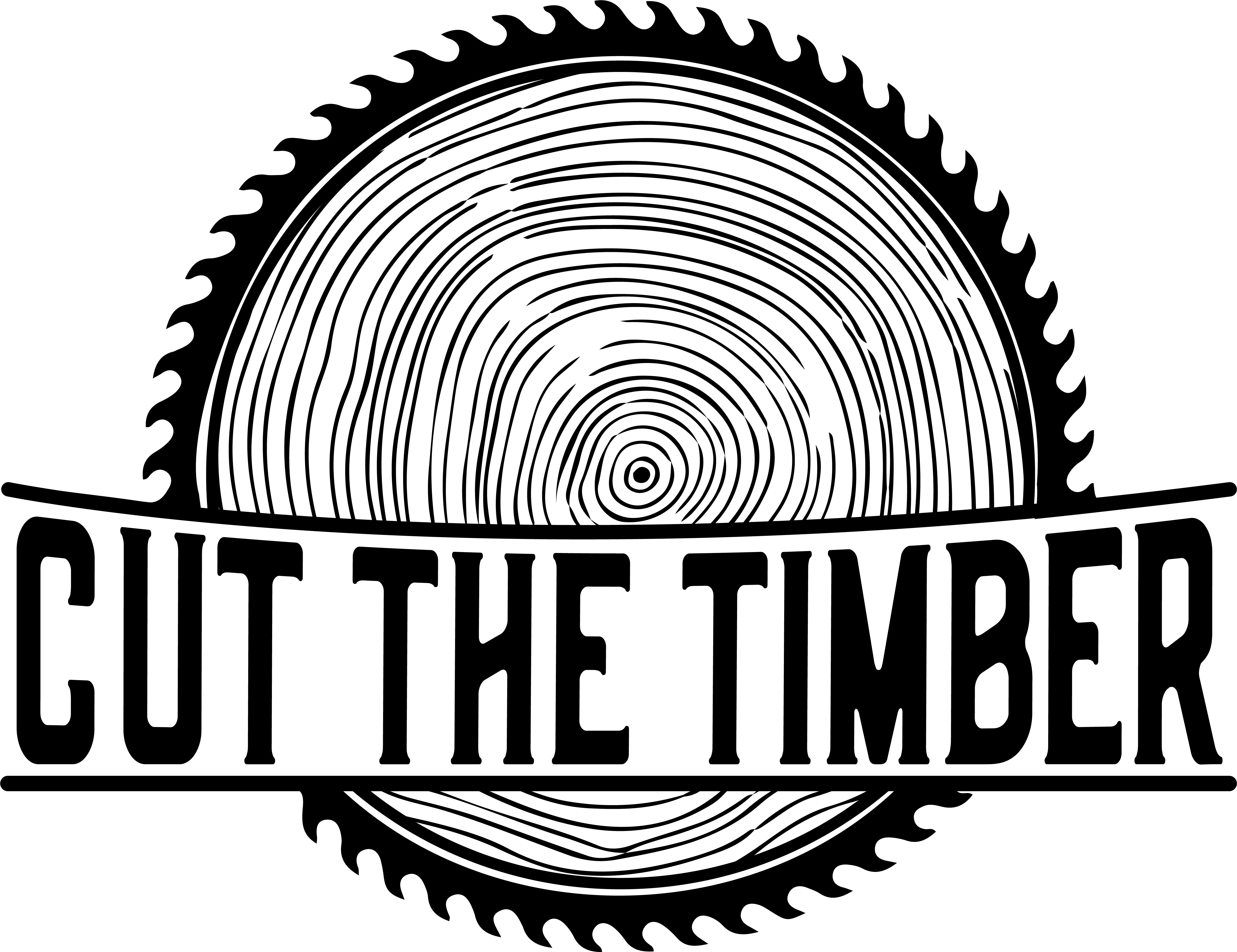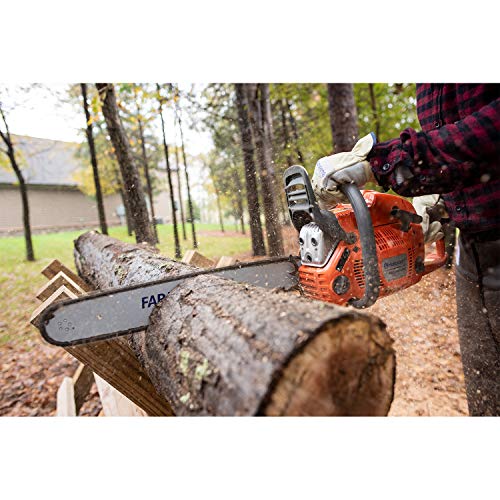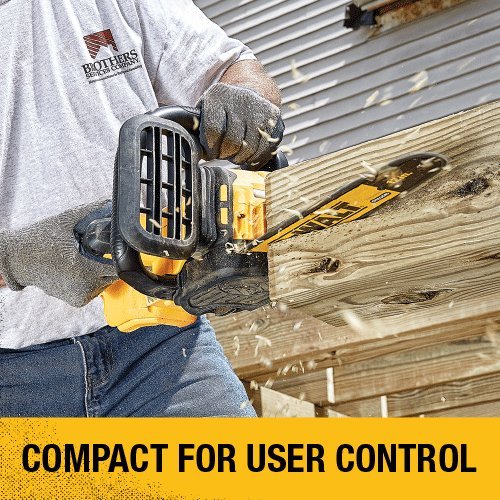Weight is hardly a hot topic of concern when folks are picking out their ideal chainsaw, but it should be.
Weight is directly related to your ability to safely use your machine, with heavier machines leading to fatigue and sloppy handling that can result in serious injuries.
A result of many factors, the weight of your chainsaw can also indicate the quality of your machine and its ability to handle certain jobs.
The weight of your machine may also depend on bar size, power source, and construction materials.
As expected, the larger your chainsaw, the more it will weigh. This is why it is important to select a chainsaw that is appropriately sized for the task at hand.
You should always opt for the lightest-weight chainsaw that can effectively accomplish your desired cutting goals, to help prevent user fatigue and injury.
Typically speaking, smaller-framed individuals and those who are not physically fit will benefit from using a lighter weight machine. Even larger-framed and stronger folks will find lighter weight machines easier to use and control.
Fatigue is a major concern during chainsaw use. I would say an average chainsaw weighs around 20 pounds.
If you are planning to use your chainsaw for an hour, imagine holding a Dachshund dog in your outstretched hands, moving your arms all around your body the entire time.
You can imagine how quickly your arms would tire. Naturally, as your arms tire, you are more likely to lose control of your chainsaw, which can lead to devastating, sometimes fatal, injuries to you or those around you.
What are you going to use the chainsaw for?
The size of your project makes a big difference when considering the weight of your chainsaw. It’s probably easier to hold and manipulate a 20-pound tool for projects of shorter duration.
If you are embarking on a longer project, lasting several hours, you can imagine how much more difficult it would be if your chainsaw was heavy.
So, what happens when your arms get fatigued when you’re using a chainsaw and why is it so dangerous?
First off, you will have a harder time lifting and moving your chainsaw. This will lead to improper form, which can cause aches and pains in other parts of your body.
When your body is fatigued from the weight of your chainsaw, you may be tempted to take shortcuts (no pun intended) that are riskier than completing your project the safest possible way.
This could lead to poor cuts, damaging the living tree that you are trimming, or even worse, to branches or trees falling in undesirable locations, causing damage to persons or property in the surrounding area.
Also, if your arms or hands become tired, you may drop your chainsaw, or let it slip from your hands.
Most chainsaws have safety throttle and chain brake features to prevent a dropped chainsaw from continuing to operate, but even tired hands may keep their grip on a safety throttle during a slipping chainsaw incident.
Although most chainsaws have ergonomic handles that are designed to help reduce vibration and keep your hands comfortable while gripping the chainsaw, it is possible with extended use that your hands will become tired.
Finding a chainsaw that has a lower weight will help reduce the chance of hand fatigue when using your chainsaw.
Power type
Well, what is it that determines the weight of a chainsaw?
A few things determine how heavy a chainsaw will be. In most situations, electric chainsaws will be the lightest and gas-powered chainsaws will be heaviest.
Cordless chainsaws are right in the middle, and their weight can be changed by opting for larger or smaller – aka heavier or lighter – battery packs.
Gas-powered chainsaws are usually the heaviest chainsaws because they require a lot of metal parts, and metal is heavier than the plastic that can safely be used on electric and cordless chainsaws.
Because a gas-powered chainsaw runs hotter than its electric and cordless counterparts, they need to be constructed with a material that can withstand higher temperatures.
Naturally, since metal is more heat-tolerant than plastic, it is the favored material for building gas-powered chainsaws.
Some people are tempted to buy gas-powered chainsaws because they think the metal build is more dependable and will last longer than the plastic builds found on electric or cordless chainsaws.
With good care, the plastic build of electric and cordless chainsaws will not reduce the dependability or power of the chainsaw.
Rather, it just reduces weight and makes it easier for you to hold, maneuver, and control your chainsaw over longer durations of time.
Metal is typically regarded as a higher-value and higher-quality material because it can stand up against heavy use and a little more wear-and-tear than other materials.
For the occasional chainsaw user, or for those planning to use their chainsaw for smaller projects, this should not really be of primary concern when selecting the chainsaw that is best for you.
Now, some chainsaws can have variable weights, depending on how you fit them. For example, a cordless chainsaw may have a variable weight depending on the size and type of battery that you choose to use.
Maybe you would consider using a couple of smaller sized batteries for big projects instead a larger, heavier battery, so you could reduce possible fatigue in the long run.
Other chainsaws can work with different sized bar lengths, and of course, a smaller bar size would reduce weight.
If your chainsaw has this option, you’ll want to work with the smallest bar size that will be effective to safely complete the task at hand. This will reduce fatigue, and could even save you money on fuel and oil costs.
Conclusion
After this article, we hope that you can see why it is important to consider the weight of your chainsaw when you are contemplating a chainsaw purchase.
If you have more than one chainsaw in your stash, you’ll now see why it is important for you to pick the chainsaw size that is most appropriate for the project you want to complete, and fit it with the correct size optional components, like batteries, bars, and chains.








